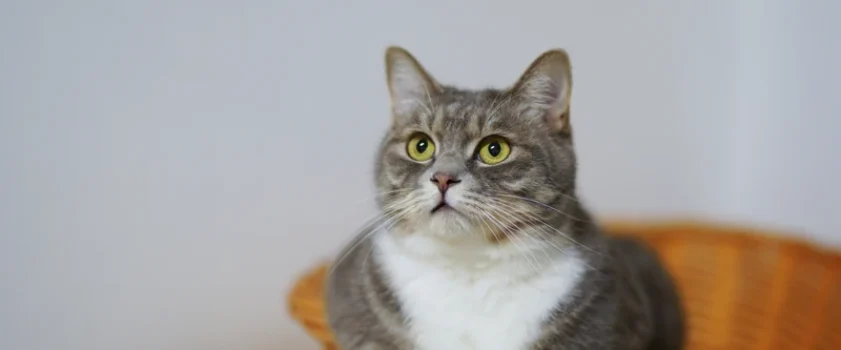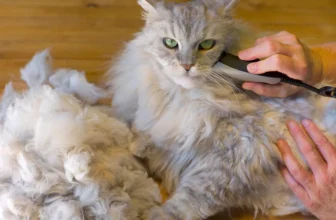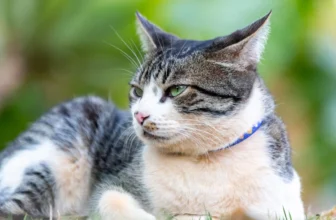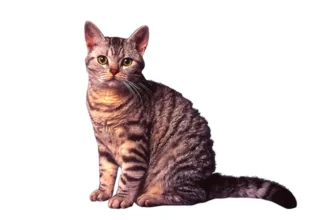It’s no secret that cats are a popular choice for pets among animal lovers. American Wirehair Cats, in particular, have been a favorite with their distinctive, wiry coat and sweet personality. However, as with any pet, there are a few issues that can arise with their health. One common problem that owners may encounter is nail problems. This can range from overgrown nails to infected ones. As a loving cat owner, you want to ensure that your pet is healthy and happy, which is why we have put together a guide on common nail problems in American Wirehair Cats and how to solve them. Let’s dive in and learn how to keep your furry friend’s nails in tip-top shape.
Common Nail Problems in American Wirehair Cats
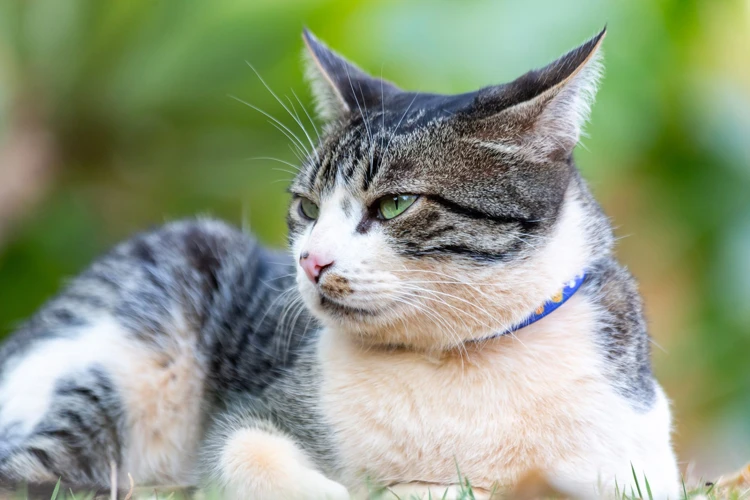
Feline owners know that keeping their furry friends healthy involves regular grooming, including nail care. However, even with proper trimming and hygiene, American Wirehair cats can experience various nail problems, causing discomfort and pain. As cat parents, it is essential to be aware of the most common nail problems in American Wirehair cats and how to prevent and treat them. From ingrown nails to infected paws, we have got everything covered. Stay tuned to learn how to keep your feline’s paws healthy and happy. For more information about nail care for Wirehair cats, check out our detailed guide on nail care for American Wirehair cats.
Ingrown Nails
Ingrown nails can be a common problem in American Wirehair cats, especially if they have not had regular nail trimming. Ingrown nails are nails that have grown into the paw pad. This can be painful for your cat and cause irritation or even infection. As a caretaker, it’s important to know the symptoms of ingrown nails and how to prevent them.
Symptoms of Ingrown Nails:
| Signs | Description |
|---|---|
| Limping or favoring one paw | If your cat is limping or not putting weight on one paw, it may be a sign of an ingrown nail. |
| Licking or chewing at paw | Your cat may be trying to relieve the pain by licking or chewing at their affected paw. |
| Swelling or redness around nail | If the area around the nail is swollen or red, it could indicate an infection. |
Preventing Ingrown Nails:
To prevent ingrown nails in American Wirehair cats, regular nail trimming and proper scratching posts can be helpful. Providing your cat with scratching posts can help them wear down their nails and prevent them from growing too long. If your cat doesn’t like having their nails trimmed, there are alternative methods such as nail caps or using scratching posts that file down their nails naturally. Here are some relevant links for further reading on nail trimming:
- American Wirehair Nail Trim Guide
- Alternative Nail Trimming Methods for American Wirehair Cats
- Understanding the Nail Anatomy of American Wirehair Cats
Treating Ingrown Nails:
If you suspect your cat has an ingrown nail, it’s important to take them to a veterinarian as soon as possible. Depending on the severity of the ingrown nail, the veterinarian may need to remove the nail or prescribe medication to help relieve the pain and prevent infection. In severe cases, surgery may be required to remove the nail or a portion of the paw pad.
Preventing ingrown nails is key to keeping your American Wirehair cat happy and healthy. Regular nail trimming, proper scratching posts, and good nutrition can all play a role in preventing nail problems.
Overgrown Nails
Overgrown nails can be a common problem in American Wirehair cats, and if left untreated, it can lead to discomfort and even pain for your furry friend. To avoid this issue, it’s important to keep an eye on your cat’s nails and take action if they start to become too long. Here are some steps to follow for managing overgrown nails in American Wirehair cats:
1. Observe Your Cat’s Behavior
If you notice that your American Wirehair is scratching more than usual, or showing signs of discomfort when they walk or jump, it could be a sign that their nails are getting too long. Take a closer look at their nails to confirm if they are overgrown.
2. Trim the Nails
Trimming your cat’s nails is essential to prevent overgrowth. Invest in a good pair of cat nail clippers and trim the nails on a regular basis. It’s important to be cautious while trimming to avoid cutting the quick – the blood vessel inside the nail. If you’re unsure about how to properly trim your cat’s nails, consult with a veterinarian or a professional groomer.
3. Provide Scratching Posts
Scratching is a natural behavior for cats that helps them keep their nails in check. Providing a scratching post or pad can help keep your American Wirehair’s nails from overgrowing. Ensure that the scratching surface is sturdy and made of sisal or other rough materials that can help file down the nails.
4. Adjust Your Cat’s Diet
Believe it or not, a cat’s diet can affect the growth rate of their nails. Ensure that your American Wirehair is getting a well-balanced and nutritious diet, which can help keep their nails healthy and strong. Consult with your veterinarian about the best diet for your cat’s specific needs.
5. Visit a Veterinarian
If your cat’s nails continue to grow at an abnormal rate, despite your efforts, it’s best to seek advice from a veterinarian. Overgrown nails can be an indicator of health issues such as hormone imbalances or infections. Your vet can help diagnose any underlying conditions and recommend a treatment plan to manage the problem.
By following these steps and taking preventative measures, you can help ensure that your American Wirehair cat’s nails stay healthy and comfortable. Regular nail trimming, providing a suitable scratching surface, adjusting their diet, and seeking professional advice can all help prevent and manage overgrown nails.
Broken or Split Nails
Cats, including American Wirehair Cats, use their nails for various activities such as playing, hunting, and climbing. Broken or split nails can occur when a cat’s nail is snagged on something or when it is accidentally trimmed too short. This can be painful for the cat and may result in bleeding. Here are the steps you can take to solve this problem:
| Step 1: | Inspect the broken or split nail and assess the damage. If there is bleeding, apply pressure to the nail with a clean cloth to stop the bleeding. |
|---|---|
| Step 2: | Use a pair of sharp scissors to carefully trim away any loose or jagged pieces of the nail. |
| Step 3: | If the nail is bleeding, dip the tip of the nail into a styptic powder or cornstarch to help stop the bleeding. |
| Step 4: | Apply an antibiotic ointment to the affected nail to prevent infection. |
| Step 5: | Place a protective covering, such as a piece of gauze or bandage, over the affected nail to keep it clean and prevent further injury. |
| Step 6: | Monitor your cat for any signs of pain, swelling, or infection. If you notice any of these symptoms, seek veterinary care immediately. |
It’s important to regularly inspect your cat’s nails to catch any problems early. Avoid trimming your cat’s nails too short and provide your cat with appropriate scratching surfaces to prevent their nails from becoming too brittle or weak. If your cat frequently experiences broken or split nails, consult with your veterinarian to determine if there is an underlying health issue.
Infected Nails
When a cat’s nail becomes infected, it can be a painful and uncomfortable experience for your feline friend. Infections can occur due to various reasons like injury, fungal or bacterial growth, or even just a dirty environment. It’s essential to catch the signs of an infection early and know how to treat it at home or with the help of a veterinarian. Here are some signs of an infected nail:
| Signs of infected nails in cats |
|---|
| Swelling |
| Redness |
| Pus |
| Lethargy |
| Loss of appetite |
If you suspect that your American Wirehair cat has an infected nail, it’s best to take them to a veterinarian. A vet can prescribe antibiotics and provide professional cleaning of the wound. However, in some cases, if the infection is caught early on, it can be treated at home. You can start by soaking the affected paw in warm water mixed with salt and vinegar for about 5-10 minutes. This can help to reduce inflammation and fight bacteria in the area.
Additionally, you can use an over-the-counter antibiotic ointment to apply directly to the infected nail. Remember to keep your cat’s paws clean and dry with regular bathing and grooming. An infected nail can cause significant discomfort and should not be neglected.
To prevent infections from happening, ensure that your cat has a clean litter box and avoid exposing them to unclean environments. Regular nail trimming is also important as it minimizes the risk of injury and ingrown nails, which can become infected if left untreated.
Knowing the signs of an infected nail and how to treat it can help keep your American Wirehair cat happy and healthy. Remember that infection should be treated promptly, and if in doubt, always seek the help of a veterinarian.
Preventative Measures

Taking proactive steps to prevent nail problems in American Wirehair cats is key to maintaining their overall health and wellness. By implementing a few simple measures, pet owners can keep their cats’ nails healthy and prevent nail issues from occurring. Here are some preventative measures you can take to ensure your furry friend’s nails stay in tip-top shape.
Regular Nail Trimming
One of the most effective preventative measures for nail problems in American Wirehair cats is regular nail trimming. This involves cutting the nails to an appropriate length using specialized nail clippers designed for cats. Here are a few tips for keeping your cat’s nails healthy through regular trimming:
1. Trim nails every 2-4 weeks
The frequency of trimming will depend on your cat’s individual nail growth rate, but most cats require trimming every 2-4 weeks. This helps to prevent nails from becoming overgrown, which can lead to snags, splits, and breaks.
2. Use proper nail clippers
It is important to use specialized nail clippers for cats, as using human nail clippers or scissors can cause the nail to split or crack. There are two types of cat nail clippers: scissors-style and guillotine-style. It is best to choose the type that you are most comfortable using.
3. Be cautious when trimming
When trimming your cat’s nails, be cautious not to cut into the quick – the pink part of the nail that contains blood vessels and nerves. Cutting the quick can be painful and cause bleeding. If your cat has light-colored nails, the quick is easy to see. If your cat has dark nails, it may be more difficult to identify the quick. Only trim the very tip of the nail to be safe.
4. Use positive reinforcement
Many cats dislike having their nails trimmed, so it is important to use positive reinforcement to make the experience as stress-free as possible. Offer treats and praise your cat for good behavior. If your cat becomes too stressed, take a break and try again later.
By following these tips for regular nail trimming, you can help prevent the development of common nail problems in American Wirehair cats, such as overgrown, ingrown, or infected nails.
Proper Scratching Posts
As a cat owner, it’s essential to provide proper scratching posts for your American Wirehair cat to prevent nail problems. Scratching is instinctive behavior for cats, and without a scratching post, they may resort to scratching furniture or other surfaces in your home. Here are some tips for choosing proper scratching posts:
- Material: Choose a post made from materials that allow your cat to scratch and stretch comfortably. Natural materials like sisal ropes or wood are great choices.
- Size: Your cat should be able to stretch and scratch without feeling restricted. The post should be at least as tall as your cat when they’re fully stretched.
- Stability: The post should be sturdy enough to handle your cat’s weight and movements without wobbling or falling over. A post that’s too flimsy can be dangerous for your cat and may cause injuries.
It’s also important to place the scratching post in a location that your cat frequents, like near their bed or in a common area. Encourage your cat to use the post by rubbing some catnip onto the surface or playing with toys around it.
Remember that scratching posts aren’t a one-time purchase. Your cat may become bored of the post or wear it down over time. Keep an eye on the post’s condition and replace it when necessary to ensure your American Wirehair cat always has a suitable surface to scratch on.
Good Nutrition
Proper nutrition is a crucial component of a cat’s overall health, including their nail health. Feeding your American Wirehair cat a well-balanced, nutritious diet can help prevent various nail problems, such as brittleness, breakage, and splitting. Here are some nutrients that you should consider when selecting cat food:
| Nutrient | Role | Food Sources |
|---|---|---|
| Protein | Constituent of nails | Meat, poultry, fish, eggs, and some vegetables |
| Biotin | Essential for nail health | Egg yolks, liver, nuts, and grains |
| Vitamin E | Protects against oxidative damage | Nuts, seeds, vegetable oils, and leafy greens |
| Zinc | Aids in nail growth | Meat, shellfish, whole grains, and legumes |
| Omega-3 Fatty Acids | Reduce inflammation and improve nail strength | Fish, flaxseed, and chia seeds |
| Vitamin C | Stimulates collagen production | Citrus fruits, berries, papaya, and broccoli |
By ensuring that your American Wirehair cat is getting an adequate amount of these nutrients through their diet, you can help maintain their nail health and minimize the risk of nail problems occurring. It is important to remember that while nutrition plays a role in overall nail health, regular nail trimming and proper scratching posts are also essential in keeping your cat’s nails healthy and strong.
Treating Nail Problems in American Wirehair Cats
Finding the right treatment for nail problems in American Wirehair Cats can be a perplexing task for pet owners. While there are several methods to cure common nail problems, it’s essential to identify the underlying cause before resorting to any treatment. Cats often require customized treatment plans for their unique nail problems. In this section, we will highlight some of the most effective treatment methods for different nail issues that your American Wirehair Cat might face. Let’s dive into the details of each treatment option and get a better idea of how to solve these problems.
Ingrown Nails
One common nail problem that American Wirehair cats may encounter is ingrown nails. This occurs when the nail grows into the pad of the paw, causing discomfort and sometimes infection. It is essential to address this issue promptly to prevent further complications.
Causes: Ingrown nails can be caused by a variety of factors, including improper nail trimming, genetics, or injury. Cats that do not scratch or walk on rough surfaces may be more prone to ingrown nails.
Symptoms: Symptoms of ingrown nails in American Wirehair cats include limping, swelling, redness, and a visible nail growing into the paw pad. Cats may also groom the affected paw more than usual.
Treatment: If you suspect your cat has an ingrown nail, it is best to consult with a veterinarian. They may trim the nail and prescribe antibiotics if an infection is present. If the issue persists, and the cat is having recurrent ingrown nails, surgery may be necessary to remove a portion of the nail bed.
Prevention: Preventing ingrown nails is as simple as keeping your cat’s nails trimmed and providing appropriate scratching surfaces. Regularly examining your cat’s paws for signs of discomfort and providing proper nutrition can also help prevent this condition.
Here is a table summarizing the information above:
| Causes: | Improper nail trimming, genetics, or injury |
|---|---|
| Symptoms: | Limping, swelling, redness, visible nail growing into the paw pad, increased paw grooming |
| Treatment: | Consult veterinarian, trim nail, prescribe antibiotics if needed, surgery if necessary |
| Prevention: | Regular nail trimming, appropriate scratching surfaces, paw examination, good nutrition |
Ingrown nails are a common nail problem in American Wirehair cats that can cause discomfort and even infection. While treatment and prevention are relatively simple, it is crucial to consult a veterinarian if you suspect your cat has an ingrown nail to avoid further complications.
Overgrown Nails
Overgrown nails are a common problem for American Wirehair Cats. If left unattended, overgrown nails can eventually curve and grow back into the paw pad, causing extreme pain and discomfort. Regularly trimming your cat’s nails can prevent overgrowth, but if it has already happened, here are some steps you can take to solve the problem.
One of the first steps to take when dealing with overgrown nails is to assess the severity of the situation. If the nails are only slightly overgrown, you can usually trim them at home with a pair of cat nail clippers. However, if the nails are severely overgrown and have already grown into the paw pad, it’s best to take your cat to a veterinarian for a professional trim. Trying to trim severely overgrown nails at home can be dangerous and may cause significant pain to your cat.
Table
| Steps to solve overgrown nails in American Wirehair Cats: |
|---|
| Step 1: If the nails are only slightly overgrown, trim them at home with a pair of cat nail clippers. |
| Step 2: Use treats and positive reinforcement to keep your cat calm and still during the trimming process. |
| Step 3: Clip only the very tip of the nail, avoiding the quick (the pink part of the nail that contains nerves and blood vessels). |
| Step 4: If the nails are severely overgrown, take your cat to a veterinarian for a professional trim. They will also advise you on a future trimming schedule considering the breed and the activities of your cat. |
It’s essential to use treats and positive reinforcement to keep your cat calm and still during the trimming process. You should also clip only the very tip of the nail, being careful to avoid the quick. The quick is the pink part of the nail that contains nerves and blood vessels, and if cut, it can cause pain and bleeding. If you are not confident in trimming your cat’s nails at home, take them to a professional groomer or veterinarian.
In addition to regular trimming, providing your American Wirehair Cat with appropriate scratching posts can also help prevent overgrown nails. Scratching posts promote healthy nail growth and provide an outlet for your cat to scratch and stretch. Good nutrition is also essential in promoting healthy nail growth, so be sure to feed your cat a well-balanced diet.
By following these steps and taking preventative measures, you can ensure that your American Wirehair Cat’s nails remain healthy and prevent overgrown nails that can cause pain and discomfort.
Broken or Split Nails
Broken or split nails are a common problem among American Wirehair cats. This issue can occur due to a number of reasons such as rough play, accidents, or just excessively long nails. If left untreated, broken or split nails can be painful for your furry friend and can even lead to infections. Here are some steps you can take to treat and prevent broken or split nails in your American Wirehair cat:
- Examine the broken nail: If you notice that your cat has a broken nail, try to examine it carefully. If the break is superficial and hasn’t caused any bleeding or swelling, you can try to treat it at home. However, if the break is deep and has caused bleeding, it’s best to take your cat to the vet.
- Trim the nail: If the broken part of the nail is hanging off, use a pair of nail clippers to carefully trim it off. Be careful not to cut the quick, which is the pink part of the nail that contains blood vessels and nerve endings.
- Clean the wound: If the nail has caused bleeding, use a clean cloth or cotton ball to apply pressure to the area for a few minutes. Then, clean the wound with an antiseptic solution to prevent any infections from developing.
- Apply a bandage: To protect the wound from further injury, you can apply a small bandage over the affected area. Make sure the bandage is not too tight and doesn’t restrict blood flow to the paw.
- Prevent further injury: To prevent further injury to your cat’s nails, make sure they are trimmed regularly. Avoid any activities that can cause excessive pressure or stress on the nails. Also, keep an eye on your cat’s behavior and discourage rough play.
By taking these steps, you can help prevent and treat broken or split nails in your American Wirehair cat. Remember, if the injury is severe or has caused significant bleeding and swelling, it’s important to seek veterinary care right away. Regular nail care can help prevent these types of issues from developing, so make sure to include it as part of your cat’s overall grooming routine.
Infected Nails
Infected nails are not just painful for American Wirehair Cats but can also lead to a more significant health problem if not addressed promptly. Some common signs of infected nails include redness, swelling, pain, and discharge. Here’s how to treat infected nails in your American Wirehair Cat:
| Treatment | Description |
|---|---|
| Antibiotics | If your cat’s infected nail is not too severe, your veterinarian may prescribe an oral or topical antibiotic to treat the infection. |
| Nail Removal | If the infection is severe, your vet may recommend removing the infected nail. This procedure is generally done under anesthesia to minimize pain to your cat. |
| Clean and Soak the Nail | Before applying any topical medication, you should clean the infected nail with lukewarm water and mild soap. After cleaning, soak the paw in a solution of Epsom salt and warm water for 10-15 minutes. |
| Topical Medication | Your veterinarian may also prescribe a topical medication to apply directly to the infected nail. You should follow the vet’s instructions carefully when applying the medication. |
| Pain Relief | Infected nails can be very painful for cats. Your veterinarian may prescribe pain relief medication to keep your cat comfortable during the healing process. |
If your American Wirehair Cat is exhibiting any sign of an infected nail, it’s important to take them to a vet immediately. Quick treatment can prevent the infection from spreading and causing further health problems.
Conclusion
In conclusion, American Wirehair cats can experience various nail problems, including ingrown nails, overgrown nails, broken or split nails, and infected nails. These issues can cause discomfort and even lead to further health problems if left untreated.
Fortunately, with proper preventative measures such regular nail trimming, providing appropriate scratching posts, and ensuring good nutrition, owners can prevent these problems from occurring in the first place. In addition, by recognizing the early signs of nail problems, owners can take prompt action to seek treatment and prevent further complications.
It is essential for owners to pay attention to their cats’ nail health and seek veterinary assistance if necessary. Nails play an important role in a cat’s daily life, and healthy nails are crucial for their overall well-being and happiness.
By following the tips and information provided in this article, owners can help their American Wirehair cats maintain healthy nails and avoid potential health issues. Remember, your cat’s nails deserve the same level of care and attention as any other part of their body. Taking care of their nails can help promote their long-term health and happiness.
Frequently Asked Questions
Why do American Wirehair cats have problems with their nails?
American Wirehair cats have problems with their nails due to their genetic characteristics. Their claws are curly, hard, and thick, causing them to grow quickly and sometimes in different directions.
What can happen if my American Wirehair cat’s nails are not trimmed regularly?
If your cat’s nails are not trimmed regularly, it can result in the nails becoming overgrown, leading to painful conditions such as ingrown nails, broken or split nails, or even infection.
How often should I trim my American Wirehair’s nails?
You should trim your cat’s nails every two to three weeks. However, if your cat’s nails grow quickly, you may need to do it more often.
How do I trim my American Wirehair’s nails?
To trim your cat’s nails, hold her securely and gently press down on her paw to extend the claws. Trim only the tip of the nail, being careful not to cut into the quick (the sensitive pink part of the nail).
What type of scratching post is best for my American Wirehair?
American Wirehair cats benefit from sturdy, vertical scratching posts made of rough materials like sisal or carpet.
Can I use human nail clippers to trim my cat’s nails?
No, you should never use human nail clippers to trim your cat’s nails. Instead, use specialized cat nail clippers or scissors.
What signs indicate an infected nail in an American Wirehair cat?
An infected nail in an American Wirehair cat may show signs such as redness and swelling around the nail, limping, or reluctance to use that paw.
How can I tell if my American Wirehair has an overgrown nail?
An overgrown nail can be identified by its length and shape. The nail may curl, become sharp, or start to turn into the paw pad, causing discomfort.
How can I prevent my American Wirehair from scratching my furniture?
You can prevent your American Wirehair from scratching your furniture by providing her with plenty of scratching posts, keeping her nails trimmed, and spraying a cat repellent on furniture or other objects.
Are there any supplements I can give my American Wirehair to strengthen her nails?
Yes, you can give your American Wirehair cat supplements that contain biotin, omega-3 fatty acids, and other essential nutrients that promote healthy nail growth.

